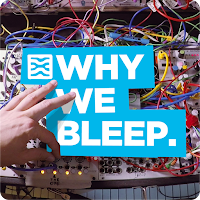Interesting that Doepfer's latest modules include some cool small, nifty non-musical utility modules.
 Last time they announced the 4 x USB eurorack power supply, and now this one:
Last time they announced the 4 x USB eurorack power supply, and now this one:" Module A-197-3 is a control unit for RGB LED stripes. The LED stripe is glued e.g. to the inner edges of the cases A-100P6/P9/PMS6/PMS9/PMS12 to illuminate the modules and patching statically or dynamically. Especially during live events the dynamic illumination in sync with the sound is an eye-catcher. Each color (red, green, blue) has available a manual control for the background brightness and a CV input with attenuator that enables the dynamic brightness controlled by other control voltages of the modular system. For example 3 envelopes can be used which also control the loudness or filtering of sound processing modules. But even other control applications are possible, e.g. LFO, random voltages, clock/gate/trigger signals, sequencer, Midi-to-CV.
These are the most important features of the module:
Control module for static or dynamic control of RGB LED stripes with up to 1m length (so far only this length has been tested, with a sufficient external power supply even longer stripes should be no problem)
Manual controls for red, green and blue (small potentiometers without knobs)
CV inputs with attenuators for red, green and blue (small potentiometers without knobs)
Note: the CV inputs are planned for CV signals (e.g. envelope generators, LFOs), not for audio signals with frequency selective processing like lighting consoles
Control LED for each color
supply via the built-in power supply of the case or external (wall-art) supply to avoid the additional current consumption for the LED stripes
(the LED stripes do not require a high quality supply like those built into the A-100 cases)
the external +12V can be connected via a socket at the front panel (i.e. the additional supply is located outside the case) or inside to the pc board (i.e. the additional supply has to be installed inside the case by the customer)
required max. current with 1m RGB LED stripes: about 800 mA @ +12V (all three colors full brightness)
the top left edge of the front panel features a gap for the lead-trough of the LED stripe cable. Therefore the module has to be mounted at the left edge of the case: top left if only the top edge of the case is used to glue the LED stripe, middle left or bottom left if the LED stripe is glued like a reverse "U" to three edges of the case
The pc board is equipped with a pin header which is used to connect the standard LED stripe that comes with the module
In addition the pc board is equipped with a second pin header with 1/10" grid which can be used to connect other LED stripes than the standard type. A suitable female connector with 30 cm long cables with open ends for free wiring is included.
The module is suitable only for LED stripes with 12V power supply and common anode (+12V) with 4-wire cables (+12V/R/G/B).
A suitable 1m long RGB LED stripe is added for free. Due to possible problems during installation (e.g. improper glueing/removing or folding of the stripe) it is not covered by warranty but should be treated as a free add-on.
An external 12V supply has to be ordered separately if required (5.5/2.5 mm connector, plus = center)."
Release date: early in 2019
Source: Doepfer.de
Edit 7/1/2019 Added Video: The module is shown in action (around 6.40) by Dieter Doepfer himself, filmed a few weeks ago at SchneidersLaden/ Berlin...












